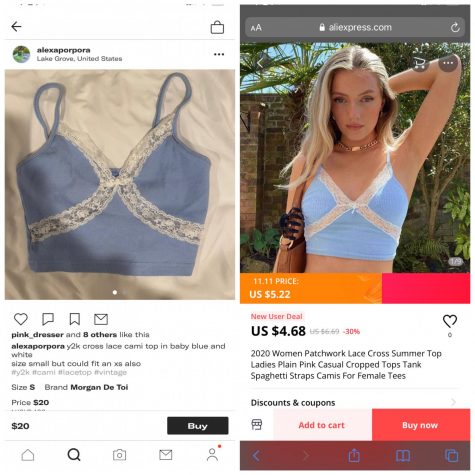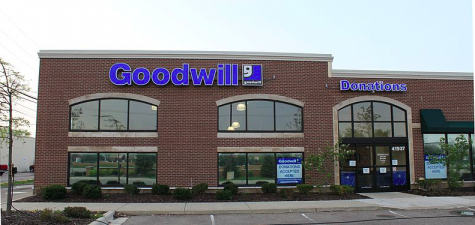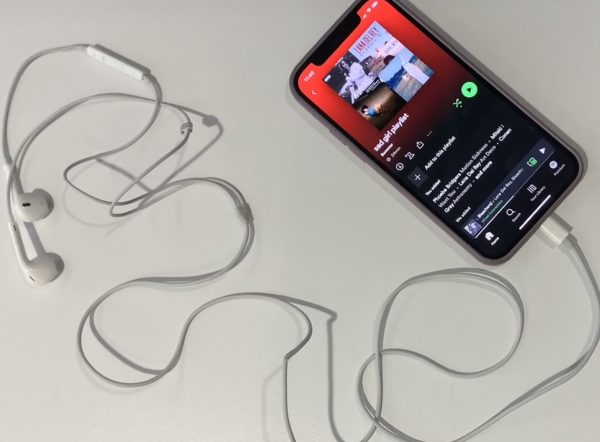Depop: the Good, the Bad and the Ugly
Depop is a dream for flea market lovers, but it has its faults.
Imagine having an international, almost endless flea market that can sit in the confines of your back pocket. That’s how I would describe the London-based shopping and selling app Depop. Depop allows its users to make their own online shop, selling either secondhand or self-made products—specifically clothing and accessories. I’d consider myself an experienced Depop shopper, as I’ve been making frequent purchases on the app for the past year. In the time I’ve used Depop, I’ve slowly grown a distaste towards many features and users within the app—financially as well as morally.

A trend I’ve recently noticed on Depop is the reselling of clothing from cheap, fast-fashion websites such as AliExpress and SHEIN. Many products from these websites are inexpensive, unethical and poorly made replicas of more expensive pieces of clothing. With fast-fashion being a problem in itself—see Ella Webber’s wonderful article covering this issue—many resellers significantly raise the price and pass the product off as an authentic name brand. While shoppers believe they are getting a deal on a second hand, high-quality piece of clothing, some teenage Depop seller from Kentucky is making thirty dollars off a cheap tank top made by a child in a third-world country. One tool to prevent making the same mistake made by thousands of other Depop users is Reverse Image Search on Google. This instrument searches for similar results of a selected photo. By reverse image searching a product on Depop, you can see if a piece can be found on a fast-fashion website. Additionally, many of these inauthentic clothes don’t have tags or labels—so look out for that!

While one big problem with Depop is the potential to get ripped-off, I often find myself questioning whether I should make purchases on the app on a moral level. A large number of Depop sellers find their pieces at thrift stores and mark up the price on their Depop shop in a process referred to as thrift-flipping. Although—like I previously mentioned—this is a rip-off, this process is also immoral and damaging to many people. Thrift stores such as Goodwill were originally intended to serve as a resource for low-income families. Not only is reselling from thrift stores taking away cheap clothes for those in need, but it also correlates to an increase in price at local and chain thrift stores. The rise in prices of thrifted pieces is harmful to the people who rely on the low cost of thrifted clothing by necessity and makes second-hand clothing less accessible to those who need it the most. As a shopper, there’s really no way to prevent this, unless a seller has proof that their product was not purchased from a thrift store. The only thing one can do as a consumer is to be mindful of the damaging effects of thrift-flipping on Depop, and try to find proof that an item was not thrifted whenever possible.
Although there’s much to criticize about Depop, if done correctly, it can be beneficial. For one, the growing popularity of selling secondhand is promoting a decline in interest in purchasing from fast-fashion sites and companies that utilize sweatshops. By purchasing resold products, Depop users are decreasing the demand for unethical clothing production. Additionally, Depop serves as an outlet to grow one’s business. Many fashion brands, such as iGirl, have started their business by selling on Depop before transitioning to a personal site.
So, to conclude this slightly-positive critique on Depop, all I have to say is this: don’t buy from AliExpress, be mindful about the financial implications you can have on lower-class families and donate to your local Goodwill.

Stella Hofferman is a senior at Boulder High. She has always enjoyed writing from a young age and is planning on majoring in Journalism at university. As a Sagittarius–who are known to speak their mind–Stella is not afraid to express her opinions to a large audience. When Stella is not writing, she can be found rummaging through a thrift store or analyzing a horror film. She enjoys fashion, cinema, astrology, and irritating her peers with her loud and annoying sense of humor. By joining The Owl, Stella hopes to share her love of the arts and carry on the legacy of world-renowned writers such as former Boulder High student Alexis Herrington. Stella is known to be a proud green grape supremacist,...






